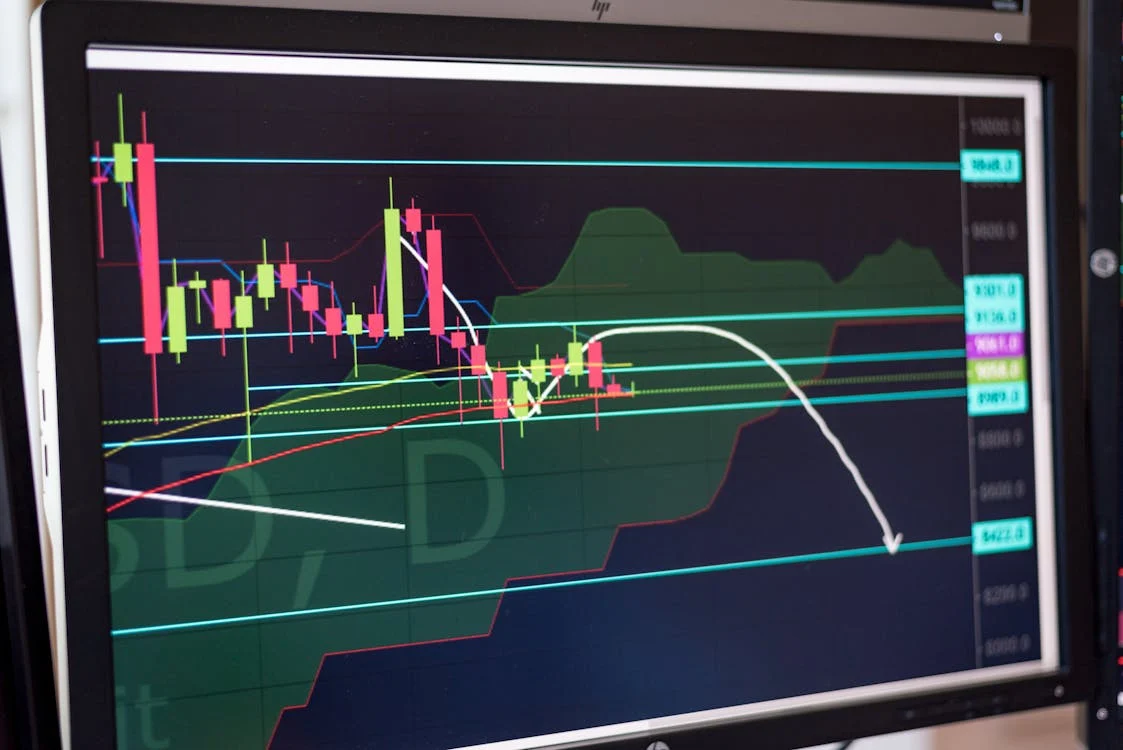The Art of Gold Scalping

Every trader who has watched gold’s chart flicker minute by minute knows how alive those numbers can feel. Each shift, however small, reflects a tug-of-war between fear and conviction. For many, these tiny fluctuations are background noise. For scalpers, they’re opportunity is measured in seconds.
Gold scalping is a fast, disciplined approach to trading that focuses on precision. It demands awareness, timing, and emotional control. It is less about predicting where gold will be tomorrow and more about recognizing what it’s doing right now. The idea is simple: identify short bursts of momentum, take small profits, and repeat. When executed with skill, those fragments of gain can add up to consistent performance.

Our Mission
To make gold and crypto trading accessible by providing clear guidance, reliable information, and practical tools. We aim to support traders at every level with straightforward resources that simplify complex markets.

Our Vision
To become the most trusted online destination for gold and crypto trading education, helping traders worldwide grow their knowledge, improve their strategies, and stay ahead of market opportunities.

The Nature of Gold Scalping
Reading the Pulse of a Moving Market
Gold never sits still. Its price reflects constant shifts in global confidence, political tension, and investor appetite. That volatility creates short bursts of movement that experienced scalpers learn to read almost instinctively. Every uptick and pullback tells a story about order flow and sentiment. Liquidity ensures there’s always someone on the other side of the trade, which makes gold an attractive instrument for fast-paced strategies. Scalpers focus on these brief windows where the price wobbles before regaining direction. They look for repetition in how the market reacts to specific events or levels, then position themselves to capture the next small move.
What separates professional scalpers from the rest is their sense of timing and control. Quick execution matters, but discipline matters more. Gold may react in seconds, yet those seconds demand composure. A trader who acts too early or hesitates too long risks losing the edge. Most operate with a pre-tested strategy and clear parameters that leave little to emotion. The trade is over almost as soon as it begins, but the preparation behind it takes time and repetition.
Finding Structure Within Speed
On a one-minute chart, gold appears restless, but patterns exist within that movement. Scalpers watch how price interacts with micro-level resistance and support, how volume builds before a surge, and how spreads tighten during active hours. These details form a map of market behavior. Over time, traders recognize familiar rhythms: when liquidity thickens, when momentum fades, and when volatility spikes without warning.
Scalping becomes less about chasing quick wins and more about anticipating reaction. A trained eye can distinguish between random noise and genuine movement. Each small trade contributes to a larger system built on precision. The skill lies in consistency; repeating what works, discarding what doesn’t, and adjusting with the market’s tempo. Gold’s constant activity rewards patience disguised as speed.
Timing the Market Without Guessing
Recognizing the Right Moments
Gold scalping rewards traders who understand when the market breathes. Activity peaks when major sessions overlap, especially between London and New York. During these hours, liquidity increases, spreads narrow, and momentum builds. Price moves cleanly, allowing trades to open and close without excessive slippage. That rhythm changes throughout the day; a trader who observes these cycles gains a natural sense of when volatility is worth engaging.
Timing also involves respect for the economic calendar. Gold reacts strongly to inflation reports, interest-rate decisions, and employment data. Scalpers prepare for these moments rather than avoid them. Quick reactions can turn short bursts of volatility into profitable trades, provided risk is tightly controlled. Success doesn’t come from guessing direction but from anticipating potential reactions and managing exposure around them.
Knowing When Not to Trade
Many assume that scalping means constant action, but restraint defines longevity. Trading every movement leads to exhaustion and mistakes. Recognizing fatigue, both mental and physical, prevents overtrading. Some traders schedule short sessions to maintain clarity, preferring several focused bursts over long marathons.
The market also has periods of low energy. Spreads widen, volume thins, and price drifts without purpose. These moments test discipline. Walking away protects capital as effectively as a stop-loss. The best scalpers understand that timing applies to their own behavior as much as to price movement. They wait for high-probability conditions instead of forcing trades during quiet hours.
This awareness turns timing into strategy. By aligning personal rhythm with market rhythm, traders preserve their focus and consistency. Gold rewards those who act decisively during opportunity and stay still during uncertainty. Guesswork disappears when timing becomes deliberate, and deliberate timing is what transforms scalping from reaction to craft.
The Tools That Matter
Building a Setup That Keeps Pace with the Market
Gold scalping thrives on speed, but speed without clarity leads to confusion. The first decision a trader makes is around the tools they trust. Every second counts, and a moment of lag can turn a good trade into a loss. A dependable trading platform with accurate data feeds is essential. It’s the difference between acting on a live market and chasing prices that have already moved. The same applies to internet reliability. Even a brief disconnect can interrupt a position at the worst time.
Indicators like the Relative Strength Index, MACD, or Bollinger Bands can provide guidance, but they shouldn’t replace judgment. They serve best as confirmation tools that help identify short bursts of strength or weakness in gold’s price. Scalpers learn which ones complement their decision-making process rather than cloud it. The goal is to keep information simple enough to process instantly. Precision beats complexity in fast trading.
Designing an Environment for Focus
A cluttered screen makes an untidy mind. Most scalpers work with two or three screens arranged for speed and focus; one to view the live price, another for order execution, and perhaps one to monitor market sentiment or news. What matters most is that everything is visible at a glance. When prices move fast, there’s no time to search through tabs or charts.
Over time, the workspace becomes an extension of the trader. Muscle memory develops from where the tools are placed, how orders are entered, and how charts are read. This familiarity builds comfort, and comfort supports consistency. Gold scalping is a manual practice shaped by repetition. The more fluent a trader becomes with their tools, the more naturally decisions flow. Technology provides the structure, but human awareness still drives the result.
The Discipline Behind Every Trade
Structure as the Foundation of Consistency
Without discipline, gold scalping collapses into chaos. The pace of trading can seduce even experienced traders into breaking their own rules. Structure prevents that slide. A defined plan outlines exactly when to enter, where to exit, and how much to risk. Those boundaries keep emotion from dictating decisions. Fast markets create pressure; discipline diffuses it.
A solid plan doesn’t eliminate losses; it limits their damage. Each trade is one of many, part of a broader system rather than a standalone event. When a setup fails, it’s data, not a disaster. Scalpers who view trading this way maintain clarity even under pressure. They avoid doubling down on mistakes or chasing lost ground. Instead, they move to the next opportunity with the same calm precision as before. The discipline to stop trading after a target or loss limit is reached protects both confidence and capital.
Developing the Trader’s Mindset
Discipline extends beyond written rules. It becomes a habit reinforced through repetition. After enough practice, actions that once required conscious effort turn automatic. Entering orders, managing risk, and closing positions happen with a steady rhythm that feels natural. That rhythm allows traders to reach what many call a “flow” state, focused yet calm, quick yet deliberate.
Maintaining that focus requires mental and physical awareness. Fatigue dulls judgment, and stress amplifies impulse. A disciplined trader knows when performance starts to fade and takes a break before errors accumulate. The mind is a tool, just like a chart or platform, and it needs maintenance.
Scalping demands constant readiness, but readiness doesn’t mean continuous activity. The quiet moments between trades often define the next profitable one. Discipline keeps those moments from turning into impatience. It’s what separates short-lived bursts of success from a career built on consistency.
The Subtle Role of Emotion
Understanding the Emotional Pulse of Scalping
Every trader eventually learns that the most brutal battle isn’t with the market but with their own reactions. Gold scalping compresses that battle into moments. The chart moves; the mind follows; emotions respond instantly. Fear appears when trades slip against you; greed appears when a position runs in your favor. Impatience pushes entries that aren’t ready. These are natural responses, but when left unchecked, they distort decision-making.
Fast markets amplify emotion because they offer little time to reflect. When a trader makes several trades within an hour, each outcome feels personal. The temptation to correct losses immediately or overtrade after success becomes strong. That’s where control must step in. Awareness begins the process; noticing how your mood shifts during a session can reveal patterns just as crucial as price data. Recognizing emotion doesn’t weaken performance; it allows you to manage it consciously.
Building Emotional Stability Through Routine
Seasoned scalpers rarely talk about emotional strength as something they’re born with. It’s a habit, built through preparation and structured practice. Some traders use breathing exercises before each session to maintain focus. Others set specific trade limits to reduce stress and keep risk measurable. When you know how much you can lose or gain in a day, the emotional stakes stay manageable.
Confidence grows as familiarity replaces uncertainty. After enough exposure, a trader starts to recognize how gold typically reacts to specific events or price levels. The emotional charge fades because the unknown becomes predictable. With time, calm replaces tension. That composure turns trading from reaction into decision. Profitability follows when the market no longer dictates mood, and choices come from clarity rather than impulse.
Building a Method That Lasts
Designing a Strategy Around Observation
No two traders see the market in the same way. A system that works for one person might fail another, not because it’s flawed, but because psychology and execution differ. The starting point for any lasting scalping method is observation. Watching gold’s short-term behavior across sessions and noting where movement begins helps shape a framework that fits your personality.
Testing is the next layer. Whether using moving averages, price breakouts, or volume reactions, strategies gain value only after being tested over many conditions. Consistency during testing matters as much as the results themselves. Markets shift between calm and volatility, and only repeated testing shows whether a strategy can hold its ground. Honest review prevents illusion. The aim is not to find perfection but reliability.
Turning Consistency Into Longevity
Patience is often underrated in scalping. Many traders abandon promising methods too soon because the early results feel uneven. Yet every system needs time to reveal its true performance. Persistence allows the trader to refine rather than restart. By adjusting one variable at a time, entry precision, stop placement, and trade size, an exemplary method becomes sharper with each review.
Gold scalping thrives on small, repeatable wins. Each trade adds to experience, and together they create a record of consistent growth. Over time, traders move away from chasing the thrill of fast profits and focus instead on protecting discipline. That shift marks the difference between a technique used occasionally and a method that supports a career. A lasting approach doesn’t rely on excitement; it depends on measured progress and steady improvement.
The Value of Reflection
Learning Through Documentation
Traders who keep detailed records give themselves a potent edge. Writing down entry points, trade reasons, and emotions during execution transforms trading into a measurable practice. Over weeks and months, patterns emerge in both the market and personal behavior. Maybe certain hours produce better results, or emotional states lead to specific mistakes. These insights aren’t visible on charts; they come only from reflection.
Documentation replaces guesswork with evidence. When a trader reviews data honestly, they see what drives their outcomes. That awareness helps separate luck from strategy. It also builds confidence in decision-making because results are grounded in reality. The process of recording itself encourages focus. When you know you’ll have to explain each trade later, discipline increases naturally.
Turning Reflection Into Growth
Reviewing mistakes without judgment develops resilience. The goal isn’t to avoid losing trades; it’s to understand them. Blaming the market wastes time. Studying your own reactions uncovers blind spots that can be corrected. This habit of analysis builds adaptability: a crucial quality in gold scalping where market conditions shift quickly.
Reflection also promotes patience. Seeing progress as a series of lessons rather than a straight line keeps traders motivated even during slow phases. Each session provides new feedback. Recognizing that feedback and adjusting behavior accordingly convert experience into skill. Success in gold scalping grows from awareness, patience, and a steady willingness to learn from every tick. Over time, reflection becomes less of a task and more of a natural part of trading, the quiet process that keeps progress alive.
Gold scalping rewards patience disguised as speed. It might seem like a race, but the finish line moves with each trade. The trader who learns to act without haste and pause without fear will always outlast the one chasing the next big move.
There is a rhythm to gold that becomes familiar over time. Once you recognize it, trading feels less like reacting and more like participating with awareness. Small profits build slowly, but they create with purpose.
If you’re ready to refine your technique, strengthen your discipline, and understand how consistent trading can grow quietly over time, explore the educational insights and expert commentary available at TradeGoldOnline.com. Knowledge doesn’t remove risk, but it sharpens perception, and that’s where every successful trade begins.


